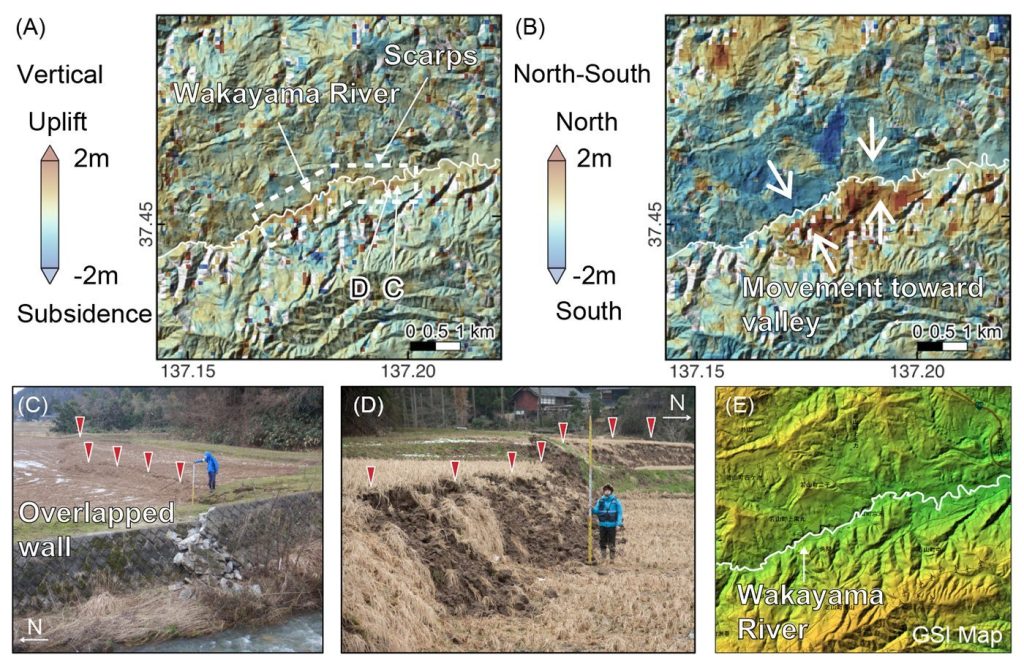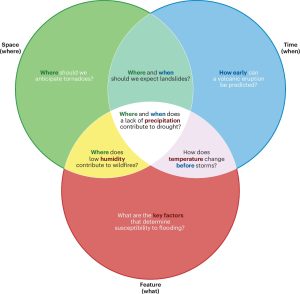
Land topography is usually formed gradually over long periods of time, but sometimes a single event can dramatically change things. On New Year’s Day in 2024, a devastating earthquake in the Noto Peninsula upended the region.
A group of researchers sought to examine how this earthquake—and possibly others like it in the past—played a role in shaping the topography of the Noto Peninsula.
They found evidence that the main geomorphic characteristics of the Noto Peninsula (such as its steep cliffs in the north and gentle slopes in the south) could be explained by repeated occurrences of earthquakes of the same kind as the one that occurred on January 1. This finding may also be useful for understanding the impact future earthquakes may have.
The team of researchers from Tohoku University, Tokyo Metropolitan University, Oita University, and the German Research Center for Geosciences conducted the multi-disciplinary study that involved experts in geodesy, seismology, and geomorphology. Their paper is published in the journal Science Advances.
Satellite radar images acquired by the ALOS-2 satellite operated by the Japan Aerospace Exploration Agency (JAXA) were used by the geodesy specialists to construct maps of the three-dimensional displacements caused by the Noto Peninsula earthquake.
-

(A) Uplift distribution from the satellite image analysis and field survey. (B) North-south displacements from the satellite image analysis, after removing the displacements caused by the fault slip. (C) Fault slip model estimated from the deformation data. Credit: Science Advances (2024). DOI: 10.1126/sciadv.adp9193
-

(A) Uplift distribution along the coast (black) and the retreat distance of coastline change caused by the earthquake (blue). (B) Photograph of land emergence area. (C) Photograph showing the uplift measurement survey at Kaiso Port. Credit: Science Advances (2024). DOI: 10.1126/sciadv.adp9193
The results showed more than 4m of uplift and emergence of new terraces along the northern coast of the peninsula, westward movement of the whole North Noto, and slope displacements in mountainous areas. Some aspects could only be fully captured by the satellite radar image analyses, such as wide-area slumps (a type of landslide) spanning several kilometers.
“To support the satellite image analyses, we had a geomorphology team conduct fieldwork and actually measure the amount of uplift in person,” explains Yo Fukushima, “They traveled to 52 sites along a 120-km section of the coastline.”
This allowed the team to compare their on-the-ground observations with the satellite image analyses. The uplift distribution was in agreement with the results of the analyses, supporting their accuracy. This information was then used by the geodesy and seismology team to estimate a fault-slip model designed to explain the uplift and westward displacement patterns.
The match between the landscape features of the peninsula and deformation associated with the earthquake suggests that repetition of large earthquakes of the same kind as the 2024 Noto Peninsula earthquakes can explain the landscape buildup. The details uncovered from this study provide completely new insights that enrich our knowledge of precisely how earthquakes can drastically change the very ground we stand on.
More information:
Yo Fukushima et al, Landscape changes caused by the 2024 Noto Peninsula earthquake in Japan, Science Advances (2024). DOI: 10.1126/sciadv.adp9193
Provided by
Tohoku University
Citation:
How Japan’s 2024 Noto Peninsula earthquake shifted the landscape (2025, February 5)
retrieved 5 February 2025
from https://phys.org/news/2025-02-japan-noto-peninsula-earthquake-shifted.html
This document is subject to copyright. Apart from any fair dealing for the purpose of private study or research, no
part may be reproduced without the written permission. The content is provided for information purposes only.








